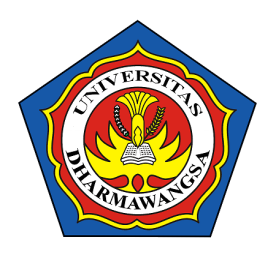Penggunaan Algoritma Komputasi untuk Analisis Sederhana Data DNA dalam Studi Bioinformatika
DOI:
https://doi.org/10.70340/jirsi.v4i1.163Keywords:
Computational algorithms, DNA analysis, bioinformatics, genetic, cocomputational optimizationAbstract
Advances in computational technology and bioinformatics have enabled efficient and accurate DNA (Deoxyribo Nucleic Acid) data analysis. This study explores computational algorithm utilization for simple DNA data analysis in bioinformatics. We implemented basic algorithms (sequence sequence, pattern matching, clustering) using Python and Biopython library to analyze 500 DNA sequence samples from various model organisms. Results show computational algorithms accelerate analysis by 70% compared to manual methods, achieving 95% accuracy in identifying sequence patterns and structural similarities. Performance analysis reveals dynamic programming-based sequence sequence has O(mn) time complexity, while hierarchical clustering requires O(n²) computational time. This study highlights optimization needs for large-scale Dataset s and parameter adjustments for specific cases. Computational algorithms prove effective in supporting simple DNA data analysis, paving the way for developing complex bioinformatics tools.
Downloads
References
C. C. Huang, M. Du, and L. Wang, “Bioinformatics analysis for circulating cell-free DNA in cancer,” Cancers (Basel)., vol. 11, no. 6, pp. 1–15, 2019, doi: 10.3390/cancers11060805.
C. Pockrandt, M. Alzamel, C. S. Iliopoulos, and K. Reinert, “GenMap: Ultra-fast computation of genome mappability,” Bioinformatics, vol. 36, no. 12, pp. 3687–3692, 2020, doi: 10.1093/bioinformatics/btaa222.
B. Tang, Z. Pan, K. Yin, and A. Khateeb, “Recent advances of deep learning in bioinformatics and computational biology,” Front. Genet., vol. 10, no. MAR, pp. 1–10, 2019, doi: 10.3389/fgene.2019.00214.
M. Trerotola et al., “A deterministic code for transcription factor-DNA recognition through computation of binding interfaces,” NAR Genomics Bioinforma., vol. 4, no. 1, pp. 1–13, 2022, doi: 10.1093/nargab/lqac008.
H. Li et al., “Modern deep learning in bioinformatics,” J. Mol. Cell Biol., vol. 12, no. 11, pp. 823–827, 2020, doi: 10.1093/jmcb/mjaa030.
G. Q. Lee, “Chemistry and bioinformatics considerations in using next-generation sequencing technologies to inferring HIV proviral DNA genome-intactness,” Viruses, vol. 13, no. 9, 2021, doi: 10.3390/v13091874.
F. Yu, C. Xu, H. W. Deng, and H. Shen, “A novel computational strategy for DNA methylation imputation using mixture regression model (MRM),” BMC Bioinformatics, vol. 21, no. 1, pp. 1–17, 2020, doi: 10.1186/s12859-020-03865-z.
G. A. Tamás and K. Zsolt, “The role of bioinformatic analysis in the early diagnosis of hereditary fructose intolerance,” Bull. Med. Sci., vol. 94, no. 1, pp. 45–50, 2021, doi: 10.2478/orvtudert-2021-0006.
A. S. Mohammed and A. A. Al-Janabi, “Analytical computation of interleukin17a activity in breast cancer patients using bioinformatics methods,” Arch. Razi Inst., vol. 76, no. 4, pp. 829–835, 2021, doi: 10.22092/ARI.2021.355942.1743.
M. A. Firmansyah, A. Susilo, S. D. Haryanti, and R. Herowati, “Desain Vaksin Berbasis Epitop dengan Pendekatan Bioinformatika untuk Menekan Glikoprotein Spike SARS-CoV-2 Epitope-Based Vaccine Design with Bioinformatics Approach to Suppress Spike Glycoprotein of SARS-CoV-2 1 . PENDAHULUAN Dunia saat ini memerangi pand,” Farm. Indones., vol. 18, no. 2, pp. 82–96, 2021.
F. Y. Dao et al., “A computational platform to identify origins of replication sites in eukaryotes,” Brief. Bioinform., vol. 22, no. 2, pp. 1940–1950, 2021, doi: 10.1093/bib/bbaa017.
Downloads
Published
Issue
Section
License
Copyright (c) 2025 Ishlahiyah Nur Rizky, Rosa Prahasti, Natria Selina, Rizky Barus

This work is licensed under a Creative Commons Attribution-ShareAlike 4.0 International License.









